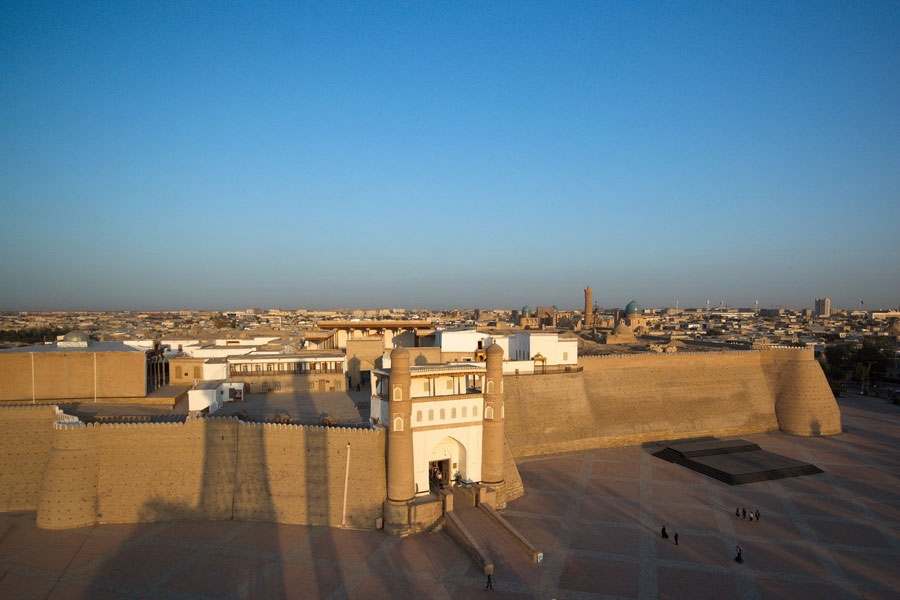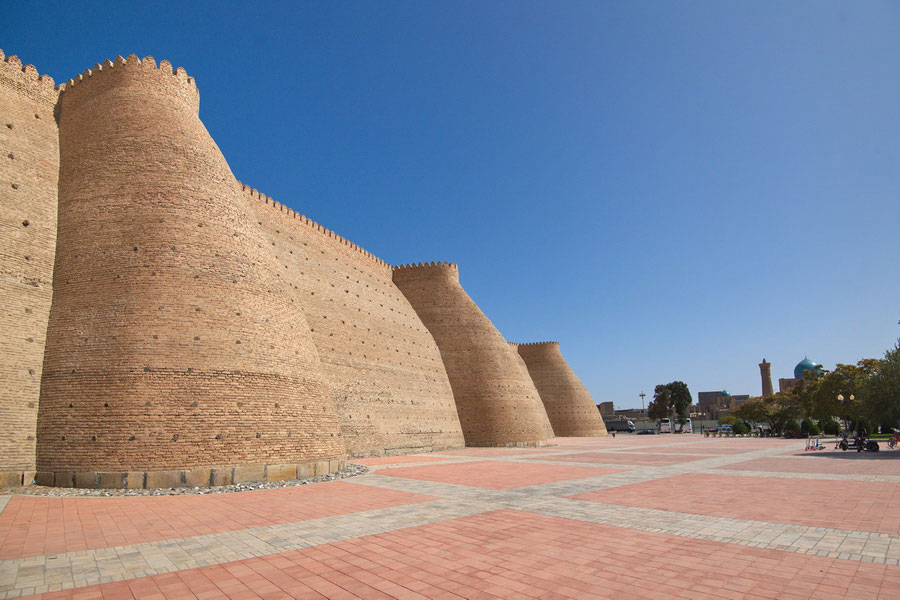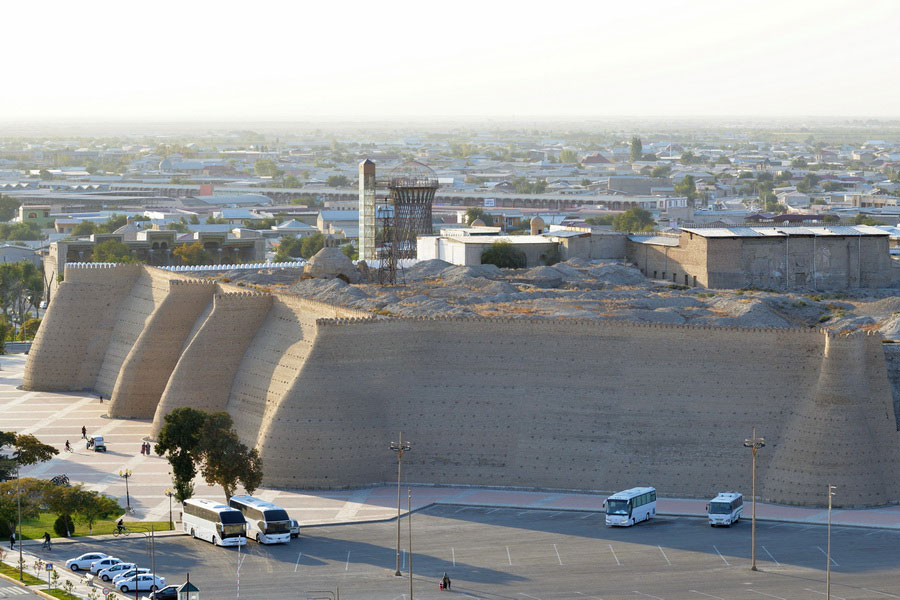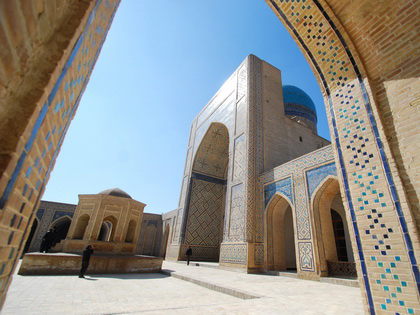Ark Fortress, Bukhara

The Ark Citadel in Bukhara is an ancient symbol of state power. It seems that from the very beginning of time, this immense fortress has stood at the heart of Bukhara, serving as protection and stronghold for the city’s rulers.
The history of the Ark remains shrouded in mystery. Its exact age is unknown, but it is certain that at least fifteen centuries ago, this imposing structure was already the residence of a ruler. It was built through the labor of thousands of slaves, who raised an artificial hill by hand, without the aid of machines, under the scorching sun of centuries past.
For centuries, the Ark remained the main residence of the Emir of Bukhara and the center of supreme authority in the region. Within its walls lived not only rulers but also great scholars, poets, and philosophers—among them Rudaki, Ferdowsi, Avicenna, Farabi, and Omar Khayyam.
A popular legend attributes the creation of the Ark to Siyavush, an epic hero of Asian folklore. According to the tale, Siyavush, fleeing the advances of his stepmother, arrived in a prosperous desert oasis. There he met the local king’s daughter and fell in love. The king, however, set a challenge: he would only give his daughter’s hand if Siyavush could build a palace on land that would fit within a bull’s hide. Cleverly, Siyavush cut the hide into thin strips, connected the ends to form a large circle, and constructed a palace within it. Thus, according to legend, the Ark was born.

The Ark rises above Registan Square, a symbol of strength, power, and unassailability. Yet the illusion of invincibility was deceptive. The fortress was repeatedly destroyed and rebuilt throughout its long history.
The Ark has witnessed many bloody conflicts. In 1220, when the armies of Genghis Khan captured Bukhara, the city’s inhabitants sought refuge within the fortress. But the Mongol forces broke through, killed the defenders, looted its treasures, and razed the structure.
Over the centuries, rebellions broke out in the city, and during these times, the Ark became a symbol of tyranny. Stones were hurled at its gates. Before the revolution, over 2,000 people lived inside the fortress—until it finally fell to the advancing Red Army.
From the outside, the modern Ark resembles a massive earthen mound. Its layout is roughly an irregular rectangle, extending from west to east. The total length of its walls is 789.6 meters, and the area covers 3.96 hectares. Its height above nearby Registan Square ranges from 16 to 20 meters.

The main entrance is framed by two tall, cylindrical towers. Above them is a connecting gallery, topped with a room that opens onto terraces. A gently sloping path leads to the gate, passing through a long, covered corridor toward the Juma Mosque. The ramp, about 20 meters long, is bordered by thick stone railings.
Inside the gate lies a dark passageway with rooms once used to store water and sand, as well as prison cells. Beyond this corridor stretches a large complex of structures. The eastern half of the Ark is now an archaeological site. The Uldukhtaron Mosque, associated with the legend of forty girls tortured and thrown into a well, has been preserved here. Within the fortress also stands the Jomi Palace Mosque, built in the 19th century for the Emir and his court. Other preserved buildings include a mint, a bathhouse, and various utility structures.


